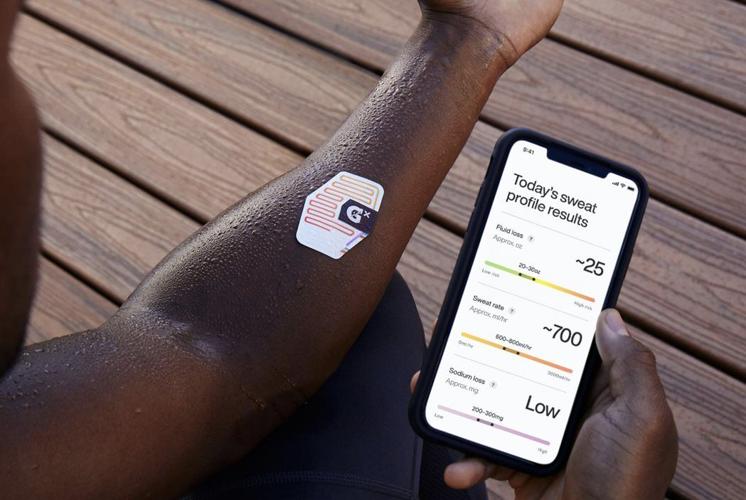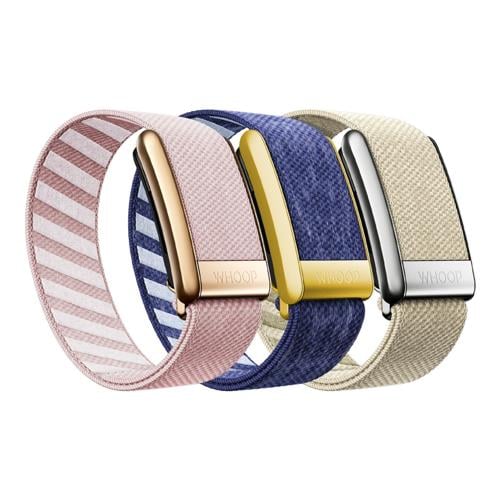Whatever we’re looking to improve about our wellness, there’s probably an app or a fitness tracker that can support. And let’s be honest, in Louisiana where our seasons are defined by food and drink, and entire festivals are centered on po-boys and fried chicken, we can use every bit of help we can get.
As a registered dietitian for more than two decades, I’ve watched wellness "wearables" evolve far beyond basic step or calorie tracking – they now serve to educate, guide and even inspire. We can check our oxygen, glucose, sweat and sleep levels – and so much more – with a simple scan or touch of our smartphone.
While these wearables, apps and trackers don’t replace the expert guidance of a physician or other healthcare provider, they empower us with knowledge and provide us with data to make the most of our time with our healthcare team, and to help guide us on our individual journeys to optimize our own personal wellness.
Here are five wellness trackers to consider gifting for yourself, family or friends.
Nutrisense Continuous Glucose Monitor
This one has been a game-changer – for me personally, as well as clients and friends.
A continuous glucose monitor provides insight about how nutrition, sleep, exercise, and stress directly impact our glucose levels.
It’s a small sensor that measures our glucose values 24/7. The sensor is applied to the back of the arm and worn for up to 14 days. By scanning the sensor with our phone, we can see our blood glucose levels shifting in real time, showing how our glucose levels respond to what we eat, how we move and more.
While the initial impression may be that this is solely for individuals with diabetes, it can provide significant benefit across the board, including those looking to maximize athletic performance, lose extra weight, maximize energy and more.
Two examples of what I learned by wearing a CGM for a month:
• Pre-workout fueling: I had been reaching for carbs before high-intensity workouts – something we’ve guided athletes to do for years. Within 20 minutes, however, my glucose levels plummeted to the 50’s, leaving me feeling light-headed and weak. After testing out several workouts and getting the same reaction, I switched my pre-workout fueling to an almond flour tortilla with melted cheese – rich in fat and protein, low in carbs. The result: My glucose levels stayed steady in the 80s and 90s throughout my workout; my energy and power felt solid.
• Nighttime snacking: I like to have a little snack at night, sometimes savory, but usually something a little sweet. I had recently discovered some lower-sugar gluten-free cookies and was enjoying a couple as a nighttime snack – it seemed benign. So I was stunned to see that this snack – with only about 100 calories and 15 grams of carb – raised my glucose levels into the "caution" range of 140s and 150s for hours through the night. Not good, since elevated glucose levels increase inflammation and can lead to vascular damage, among other negative effects.
After several nights of seeing similar data, I switched to a nighttime snack option with less than 5 grams of carbs, and my glucose levels stayed in normal range throughout the night.
Nutrisense is my preferred brand for a continuous glucose monitor. It includes an easy-to-use tracking app, and I especially love that it includes personalized support by a registered dietitian to help develop and reinforce healthful habits. Even just one month can provide insight and education to make lasting behavior change.
Starting at $199 per month depending on subscription length.
Apple Watch
The Apple Watch takes whole-body wellness and motivation to an entirely new level. We know it as a convenient way to email, texts, make calls, stream music and use Apple Pay. And of course, there’s the usual step tracker, heart rate and calories burned.
Beyond this, however, the Apple Watch Series 8 (the latest version) and the Apple Watch Ultra (designed for the adventurer) provide a plethora of data to monitor heart and vascular health, sleep quality, physical safety and more.
The Apple Watch can take an electrocardiogram (ECG), recording our heartbeat and rhythm and then checking for atrial fibrillation. There’s also the ability to measure our blood oxygen saturation levels – similar to a medical-grade pulse oximeter device. We can also gain insight about our sleep quality, including how much time we spend in REM, deep and light sleep. And Apple Watch is there to notify our contacts via Emergency SOS in the event of a car crash, or if we take a hard fall.
In spite of its wildly high-tech capabilities, the Apple Watch offers a strikingly simple ‘three rings’ approach, with each ring representing a specific objective: move more (active calories burned), exercise regularly (minutes of activity at or above a brisk walk) and sit less. The goal is to close each of the rings into a full circle by the end of each day, providing a visual representation of progress along with personalized suggestions and encouragement.
It’s worth noting that the FitBit Sense 2™ ($299.95) has their own version of most of these capabilities of the Apple Watch, minus the emergency SOS and fall detection, or syncing with our email and calendar.
Starting at $399 for Apple Watch Series 8 and $799 for Apple Watch Ultra.
Whoop
Like the Apple Watch, Whoop measures key metrics like heart rate, sleep quality and blood oxygen levels, along with tracking and accumulating our daily movement.
What sets Whoop apart, however, is the focus on optimizing recovery. By analyzing our resting heartrate, breathing rate, movement and sleep, Whoop provides real-time insight and feedback about how much exercise, sleep and rest are optimal for each of us individually. It also provides a guide for when we could benefit from taking things a little easier, and when we’re primed to go all-out.
One of my favorite elements of Whoop is we’re prompted to answer daily questions about what we did the day before: Did we consume alcohol? Eat late at night? Work the night shift? All incredibly useful tools in helping us to understand how our daily choices directly impact our personal data and performance.
Unlike the Apple Watch, there’s no display on the watch itself – data is available only via the app, which can be a welcome perk for those who don’t want the near-constant distraction of visible tracking and display of our daily metrics.
Starting at $30 per month; includes the Whoop Strap 4.0 strap.
Gx Sweat Patch
The Gx Sweat Patch provides athletes with insight about how to best hydrate. There are more sophisticated sweat loss measuring devices available in a lab setting – but they’re also typically more expensive and harder for everyday consumers to access.
The Gx Sweat Patch is applied to the forearm during a workout; the patch collects our sweat and then the app provides a readout of our sweat rate (ounces of sweat lost per hour), total fluid loss (in liters) and sodium concentration (low, moderate or high).
Sweat volume generally isn’t a surprise, since we can see and feel how much we’re sweating – but sodium concentration is less obvious. Our sweat insight can serve as a guide to maximize our hydration, including whether we reach for a high-electrolyte fluid replacer with a greater concentration of sodium.
$24.99 for pack of two patches.




